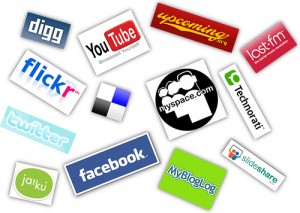Republicans make up for lost time on social media

Four years on, the digital landscape has had a makeover. Millions of Republicans have taken to social networks to wage frenzied debates about topics such as healthcare reform — driven partly by the emergence of the ultra-conservative Tea Party.
“In 2008, the Democratic party was so far ahead of the Republican party in terms of their social savvy that they completely owned the conversation about the elections on social media,” said Ron Schott of social media agency Spring Creek.
“In 2012, the Republican party made some adjustments and investments in social media in order to try and level the playing field, though the Democratic party still holds an edge after being first-to-market.”
By the time election day came along in November 2008, Obama had nearly 2.5 million supporters on Facebook, five times more than McCain.
The Democratic candidate was present on Flickr, and he had his own YouTube channel, unlike McCain. On Twitter, he had 118,000 followers compared to 4,900 for his rival.
On the actual election day, McCain did not post a single tweet — which in the Twitter-hungry world of today would be unheard of.
Four years on, the Democrats may still dominate the digital landscape but they are no longer alone. Republican challenger Mitt Romney is present on all platforms and has a large number of followers.
The Tea Party gets onto social networks
“Tea Party activists helped this,” said Benoit Thieulin, the digital strategist of France’s 2007 Socialist presidential candidate Segolene Royal and the author of a study on Obama’s 2008 web campaign.
“They took Obama’s recipe to organize themselves, using the Internet to mobilize on the ground.”
The site FreedomWorks — a non-profit organization involved in the Tea Party movement — has a “freedom connector” app that allows Conservative activists to connect with like-minded people state by state, county by county, via Facebook.
Driven partly by the Tea Party’s social media drive, “the Republicans bridged a bit of the gap during the 2010 mid-term elections, benefiting for instance from the arrival of retirees on social networks,” said Thieulin.
“Retired people have time and are consistent,” he added.
Zach Green, head of Twitter political consultants 140Elect, said Republicans in the House of Representatives and Senate had done a good job on social media.
“When they are in Congress and when they try to win a national debate, they do very well,” he said.
45% of Obama’s followers live outside the US
Nevertheless, @BarackObama still has a lot more Twitter followers than Romney (21.6 million against 1.65 million).
Out of these, only 55 percent live in the United States against 89 percent for @MittRomney, according to people search engine PeekYou.
Romney’s followers are also deemed more involved than Obama’s.
“One of the best ways to measure influence is retweets because it actually indicates how many of the followers actually are reading your tweet, and how many are engaged, support or share your message,” said Green.
“Romney gets more retweets per tweet than Obama does.”
During the last week of October, for instance, each @MittRomney tweet was retweeted 1,333 times on average, against 918 times for Obama, according to 140Elect statistics.
As for the candidates’ running mates — whose popularity online is more linked to domestic issues — the Republican Paul Ryan is almost twice as followed as Vice President Joe Biden.